Unlock the potential of your small or medium business with the best ERP software, and discover which one is the best for your business.
As technology grows, businesses can utilize software such as Enterprise Resource Planning (ERP) systems to improve their efficiency.
Most small and medium businesses use these systems to manage finances, inventory, human resources, etc.
This blog will cover how small and medium businesses can choose and benefit from using great ERP software.
What Are Enterprise Resource Planning Systems?
ERP systems are sophisticated software solutions that streamline and combine numerous organizational business activities.
They are the brains of each business, controlling and reviewing data between many sectors and sometimes regions.
ERPs are rapidly advancing, and they now provide many features that can assist firms in managing everything from finances to customer relations.
Centralized Data Repository
The best ERP for small and medium businesses is modular in design, with numerous interconnected modules or applications. Such modules represent different aspects of business activities, such as accounting, human resources, or inventory management.
The flexibility empowers firms to tailor-make their ERP systems as and when required. Scalability is another feature that modular architecture supports by allowing companies to bolt on or take off modules depending on organizational needs.
Modular Structure
ERP systems are of modular architectural design, consisting of a string of connected modules or applications.
For instance, Odoo provides a module created for the varied business processes. Modularity allows companies to suit their ERP systems as per their requirement.
It also facilitates scalability as organizations can incorporate or exclude pertinent and suitable modules when there is a change in their requirement.
Capabilities for Integration
One of the most important features of ERP software is how well it works with other parts of your business.
This involves data sharing between tools such as supply chain management systems to be used from the ERP system. If the integration is low, you might find it hard to use, or your business might not function correctly.
Automation and Workflows
ERP systems automate routine processes and workflows. They can prepare reports, manage payrolls, set inventory reorder points, and even give a reminder to call customers back.
The applications can automate all the non-interesting and complex areas more effectively than a human would.
Business Intelligence and Analytics
The ERP systems of today come with robust analytics and reporting capabilities. They convert raw data into information, supporting organizations to make decisions. Some systems also offer suggestions on which business sectors are lacking and how to fix them.
What To Consider When Choosing an ERP Software For Small and Medium Businesses?
There are many things to consider when looking for top ERP software. One app might be robust in one aspect but lacking in the others. It is crucial to choose an option that does well in all aspects.
Here are some factors to consider before deciding on ERP software:
1. Scalability
When launching a firm, looking forward and preparing for development is critical. Ensure that your ERP software can support the growing needs of your business.
2. Customization
Look for ERP packages offering numerous customization options so the package best suits your business model. Small and medium firms often have processes and special requirements, so the ability to modify the program to your needs makes a significant difference.
3. Integration Capabilities
Determine if the ERP system is compatible with your existing software, such as e-commerce platforms or customer relationship management (CRM) solutions.
4. User Friendliness
Not all companies are IT-related, and because of that, the app should be straightforward to use.
A sound system should be easy to understand regardless of the IT knowledge of the user.
5. Cost and ROI
Consider both the costs and ongoing expenses associated with the ERP software. Look for programs that are cheap but still offer various features. Strike a balance between price and quality to find the right ERP solution.
6. Cloud or On-Premises
Consider which option you want, cloud-based or located within your company. Cloud ERP systems typically have costs and offer scalability, while on-premises ones give you more control over the data.
7. Assessing Support and Training
Consider the level of customer support and training provided by the ERP vendor. A support team and accessible training resources can be precious, mainly throughout the implementation process and when troubleshooting arises.
Based on these factors, we devised a list of 5 of the best ERP systems.
The Top ERP Systems on The Market
1. Odoo
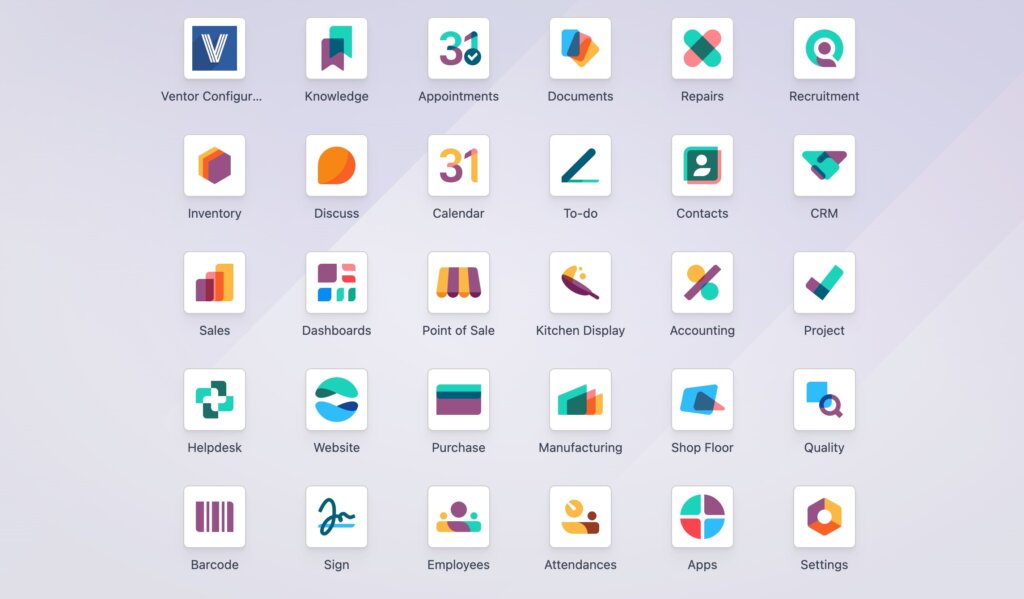
Because of its remarkable features and flexibility, Odoo is the ideal ERP system for small and medium businesses. It handles everything from online storefront creation and maintenance to stock control and financial reporting.
Since it is open source, businesses can tailor it to their specific requirements without spending a fortune. Odoo is a leading enterprise resource planning (ERP) solution for small and medium enterprises due to its wealth of features that facilitate smoother operations.
Scalability:
Odoo’s ease of expansion makes it a great choice for rapidly expanding businesses of any size.
The Odoo development company ensures you can easily include new functionality and adapt existing one to new requirements.
Simple to Use:
The fact that Odoo needs no special training makes it ideal for them. However, whether you are migrating from another ERP system or implementing one for the first time, it may be necessary to provide training services for your employees. This training will equip them with the knowledge and skills needed to adapt to new workflows effectively.
Customization:
Odoo offers a multitude of tools, such as Odoo studio, a comprehensive documentation and an experienced support staff. In most cases, an Odoo partner will be able to help a customer out.
Updates:
A big update (new version) is released each year by Odoo, with the main goal to fix bugs and enhance the ERP by adding new business processes and improving existing ones.
Useful link: Do not migrate to Odoo 17 until you read this
Integration:
Odoo’s widespread adoption as an open-source enterprise resource planning solution is a major strength. It effortlessly connects with various applications and third-party systems, enabling efficient data exchange.
Cost:
Odoo is an open-source ERP alternative that won’t break the bank. The learning curve and time to set it up are lower than those of rival premium services.
Useful link: The True Cost of Odoo ERP: Pricing and Ownership Insights
2. Acumatica
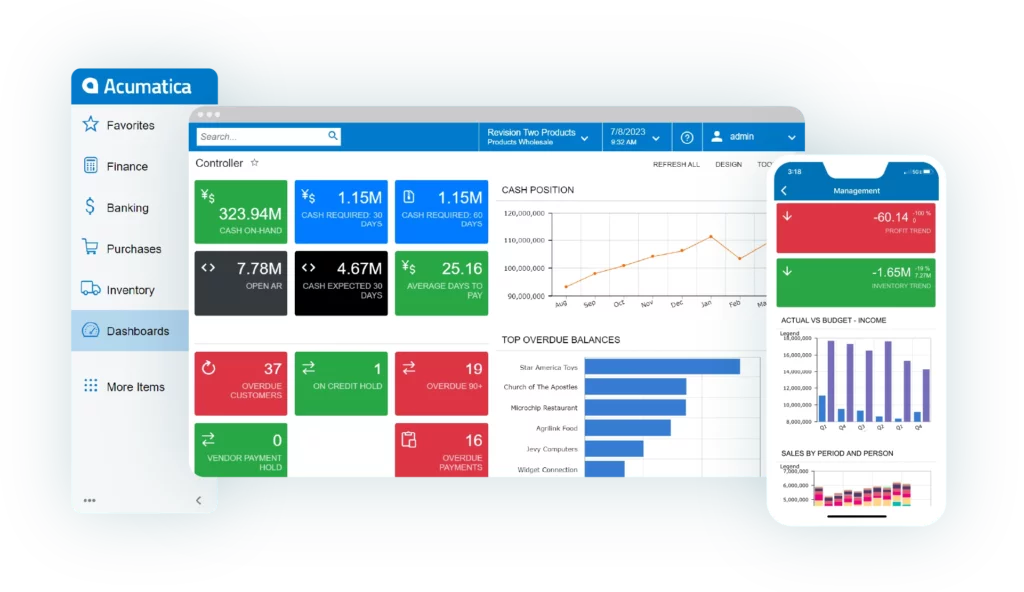
This is the best cloud-based enterprise resource planning application available. It’s flexible enough to grow with your company as it expands.
It’s practical and flexible because it’s easy to use and comes with a variety of useful extras.
When it comes to ERP systems, Acumatica is among the best in the business. Its consumers may always expect to come out on top because to its cutting-edge features and devoted service.
Scalability:
As your business expands, Acumatica makes it easy to include additional staff members.
Simple to Use:
Because of how simple it is to implement, it will soon be used by everyone in the company.
Customization:
Any business can profit greatly from a workforce that is able to quickly adjust to changing conditions.
Support:
There is always someone to help you if you have any questions or concerns at this company.
Updates:
These enhancements will make your ERP system more productive, responsive, and adaptable.
Integration:
The ERP’s excellent integration options make it easy to work with other systems.
Cost:
There is a fee associated with using Acumatica. Permits allow companies of all sizes to maximize efficiency and save money.
3. SAP Business One
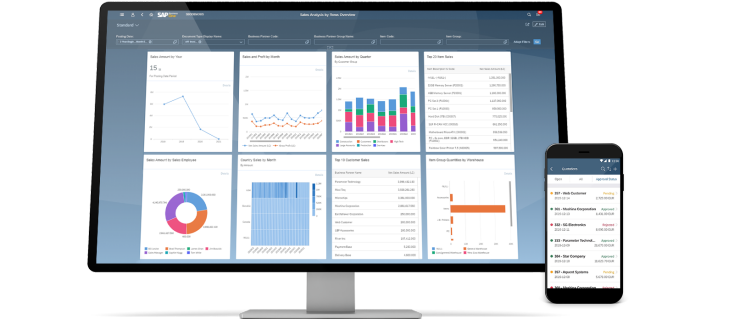
The enterprise resource planning (ERP) system SAP Business One is designed with SMEs in mind.
Possibilities for use in areas such as office management, stock control, and client services are extensive.
Because of its user-friendliness, adaptability, and wealth of features, SAP Business One is a favorite among businesses looking to increase their profits and output.
Customers and employees have high expectations, therefore you must be committed to innovation and quality.
Scalability:
SAP Business One can help a business grow. Small and medium-sized businesses were the ones who planned it. When needs change quickly, it might not be as adaptable as Acumatica and Odoo.
Simple to Use:
You can use SAP Business One without much trouble because it is simple.
Customization:
This system’s method and report-making tools are more flexible than Acumatica’s, so it can be changed to fit the needs of any business.
Support:
Companies can get help from SAP whenever they need it because it has a lot of partners and great customer service.
Updates:
As a way to help its customers stay competitive, SAP Business One is always getting better and having more features.
Integration:
Integration tools that work well with other apps and services make it simple to link to them.
Cost:
If more people need to use SAP Business One and a lot of changes need to be made, it might cost more than other choices.
4. Microsoft Dynamics
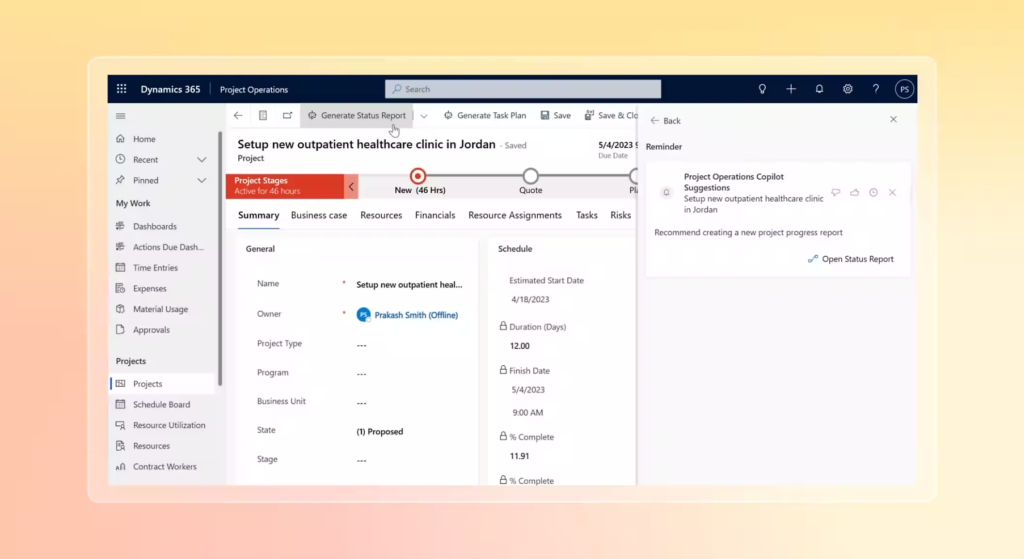
Microsoft Dynamics 365 is the best AI tool for business which comes with ERP functionalities. They have many applications across different fields, making Microsoft Dynamics 365 a very comprehensive ERP solution.
One of the best things about it is their 30-Days free trial and Mobile app.
With a presence in marketing, customer service, HR, and more, Microsoft Dynamics is a very versatile and easily implementable EPR!
Scalability:
Dynamics is considered a very scalable solution.
Ease of Use:
It’s meant to be used in all fields and designed in a way that makes it very easy to use. It is also very easy to learn.
Customization:
Dynamics 365’s design is meant to be very customizable depending on specific business needs.
Support:
There is omnichannel support and a premium package of $9 per month for easy access to experts and quick responses if needed.
Updates:
Updates can be performed depending on the schedule you have.
Integration:
Software integrations are only available as an add-on.
5. Brightpearl
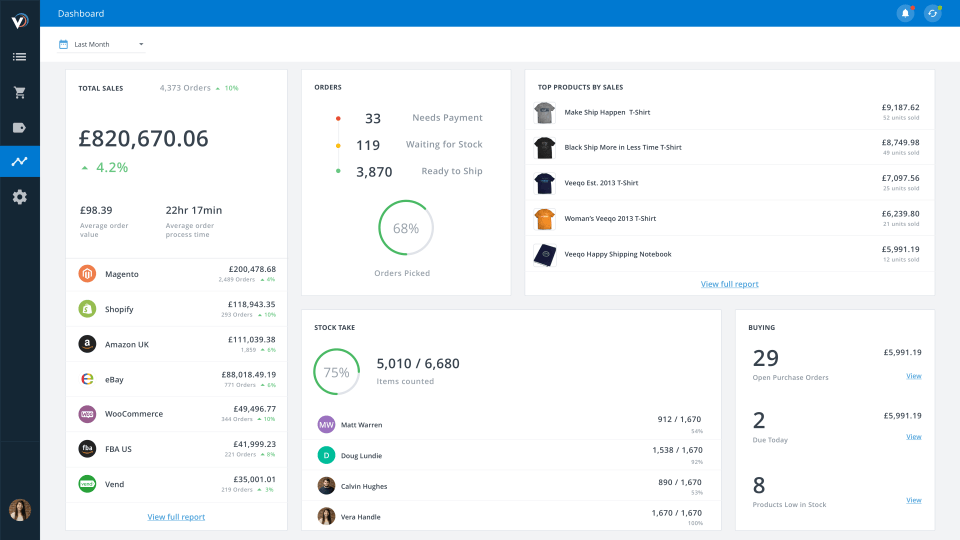
This is an ERP system, which means it can be utilized by any large company.
It can adapt to your needs and provides multiple high-powered connection choices. That’s why it’s such a good choice for companies trying to streamline their operations.
Brightpearl is an industry leader in business management, inventory management, and order fulfillment. They streamline the process of keeping tabs on stock and revenue for firms.
All costs are clearly laid out, help is easily accessible, and development can be swiftly assessed.
Scalability:
Because of its scalability, Brightpearl may be used by businesses of any size.
Ease of Use:
Bright Pear is simple enough to learn for any worker.
Customization:
Enterprises can tailor the system to their own needs by adding new modules or modifying existing ones.
Support:
The helpful staff at customer service is always there to assist you.
Updates:
Brightpearl gets better and more feature-rich with each release.
Integration:
Brightpearl’s flexibility in working with other programs and infrastructures facilitates its implementation.
Cost:
Brightpearl has a straightforward pricing structure, which may make it accessible to smaller companies. However, if the business grows, so may its costs.
Conclusion
Enterprise Resource Planning for small business is necessary for success. All SME business owners must look into choosing a great ERP.
While each ERP program has its strong sides and its weaknesses, the only ERP that excels in all aspects is Odoo.
Consider your organization’s long-term goals and industry specifics when making this decision. So, research your alternatives and select the Enterprise Resource Planning program that will best position your small or medium business for success.
Estimate automation of your Business
- 7+ years of experience in online and offline marketing
- 4+ years of experience in B2B marketing (IT companies, ERP/CRM systems)
- Main project roles: Marketing Manager, Customer Support, Sales Manager
- Increasing brand awareness. Implementing marketing strategy.
----------------------------------------------------------------------
Education: Bachelor's degree.
----------------------------------------------------------------------
Experience:
Marketing Manager
XPANSA Group
Marketing Director
sci.AI startup
Business Development Manager
Cardinal 9
Technical support and marketing
Tavrida Electric
----------------------------------------------------------------------
Current position: Head of Marketing VentorTech
----------------------------------------------------------------------
Licenses & certifications:
Product Analyst.
OTUS.
Google AdWords - search advertising.
Google.
Inbound Marketing
HubSpot.




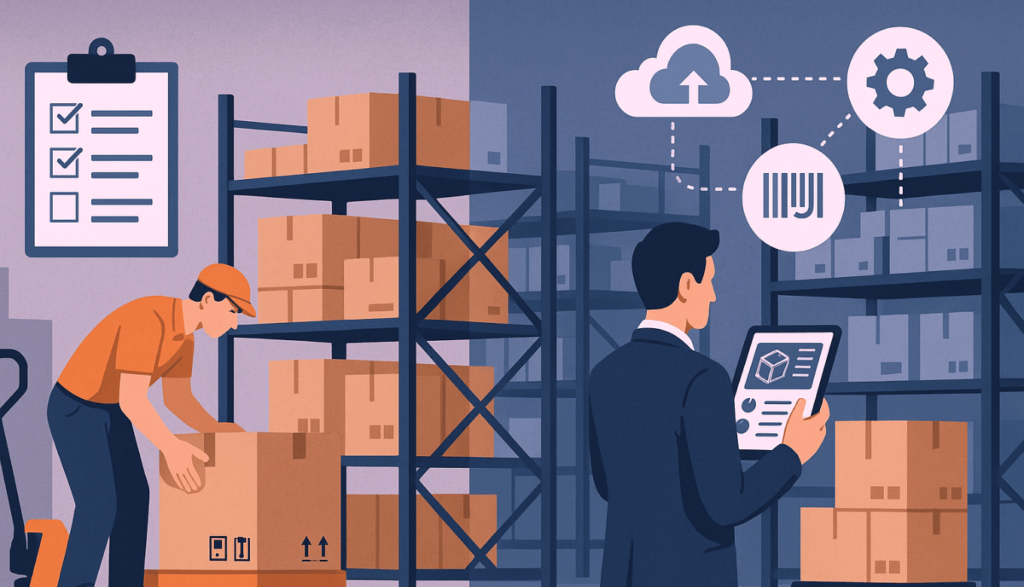
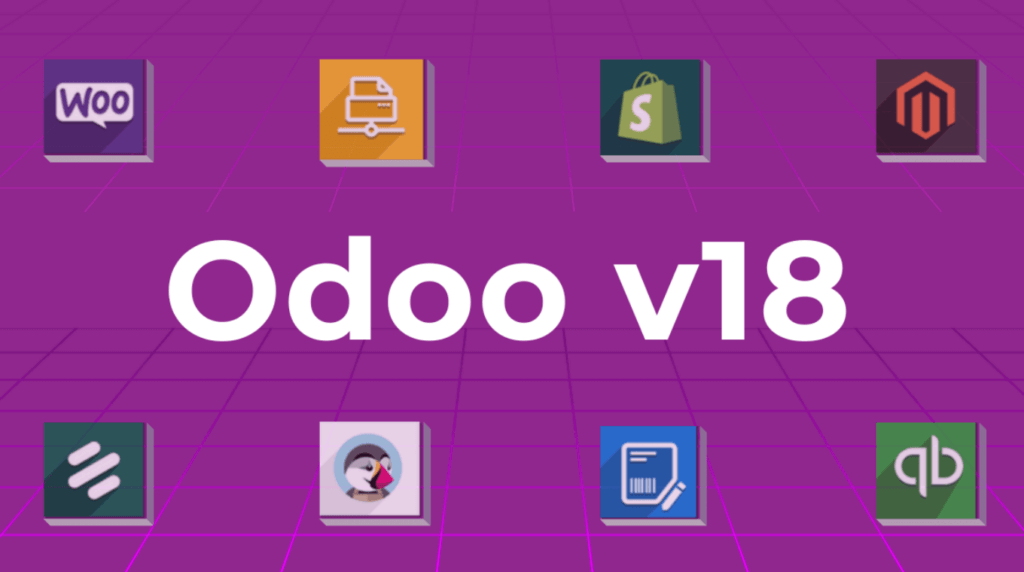
0 Comments